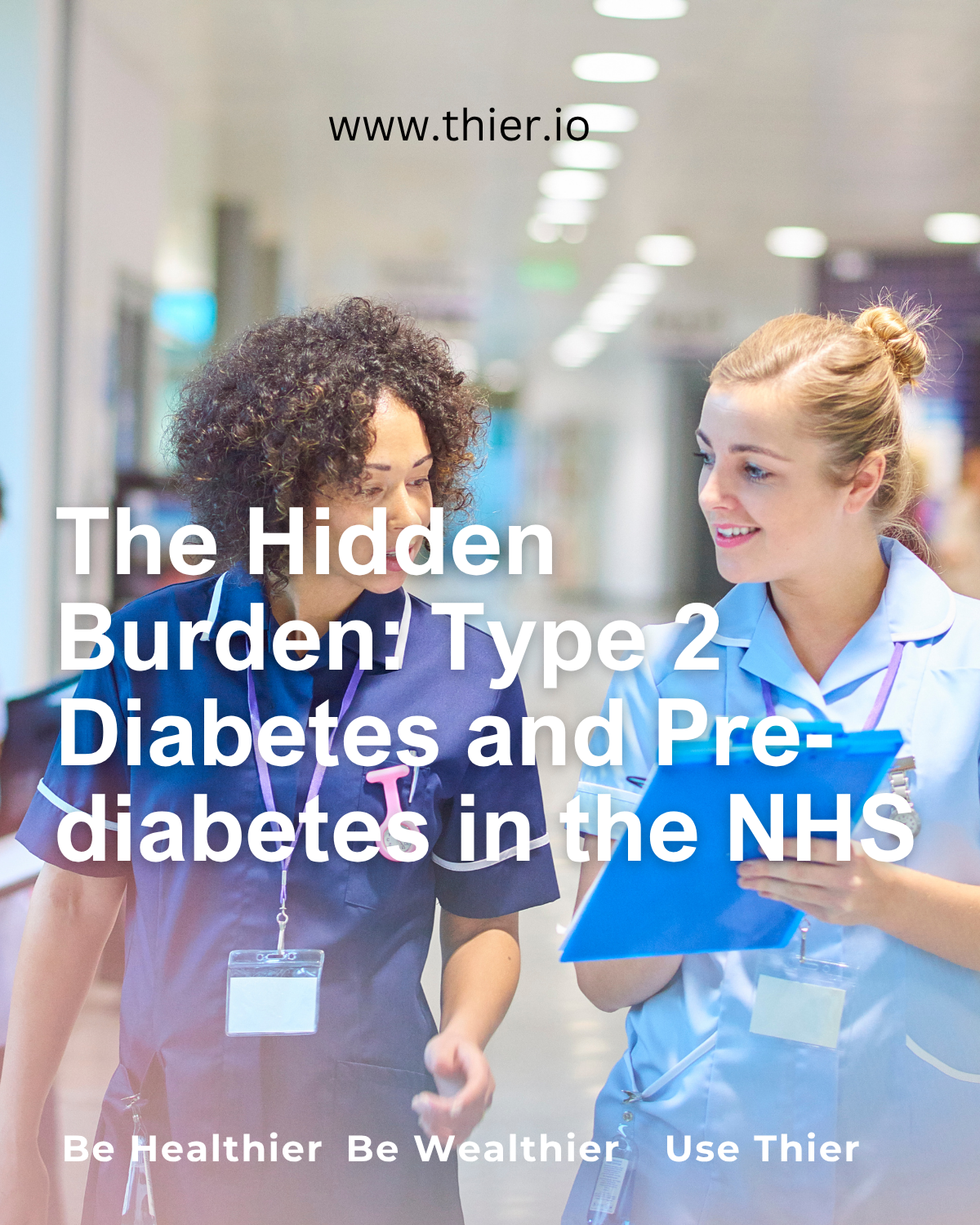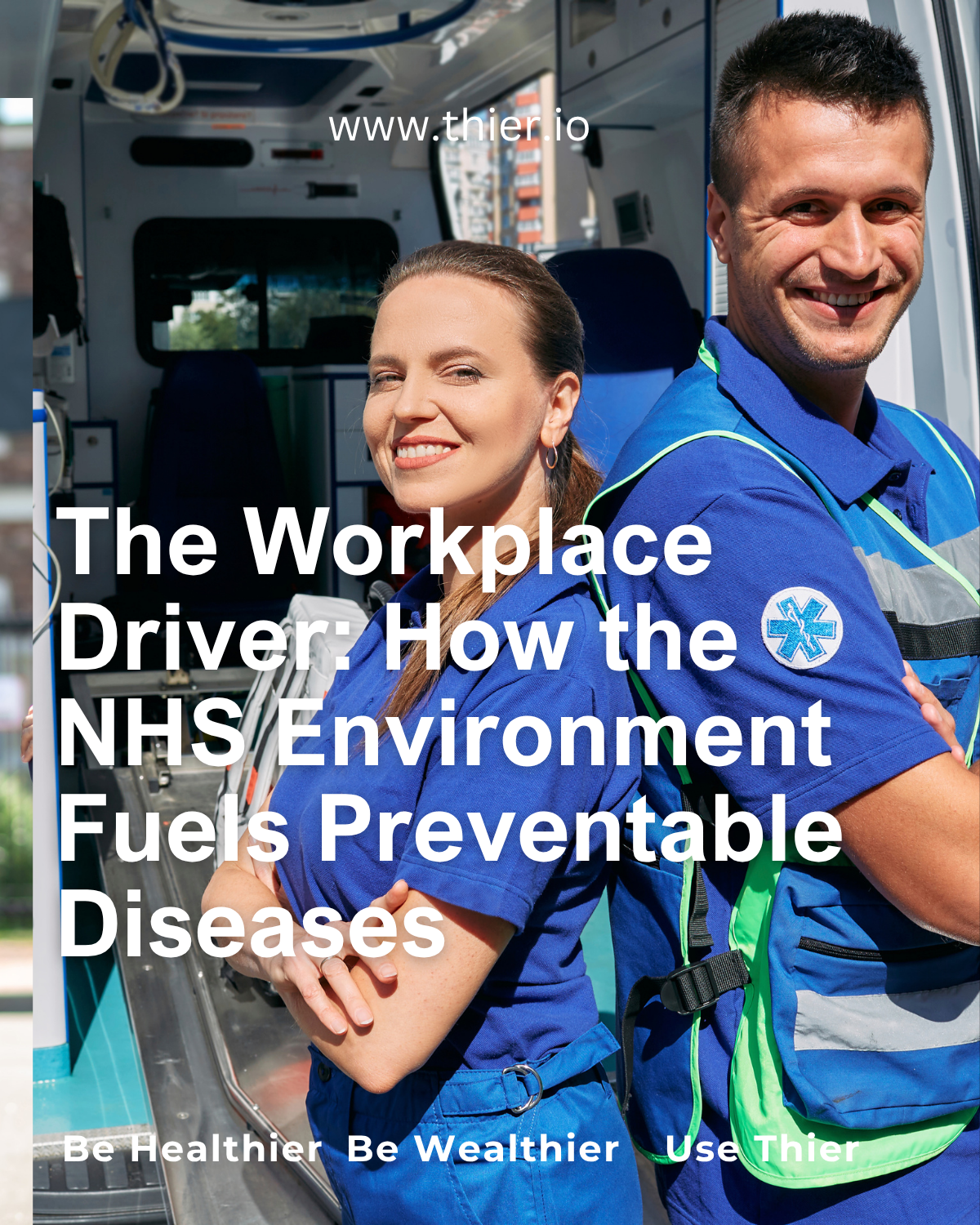The Hidden Burden: Type 2 Diabetes and Pre-diabetes in the NHS
We've explored the significant pressures on NHS staff and the concerning prevalence of obesity within its ranks. Now, let's turn our attention to one of obesity's most serious consequences: type 2 diabetes.

A Rising National Tide: Diabetes in the UK
First, it’s important to understand the broader landscape. The UK is facing a major and escalating public health crisis when it comes to diabetes. Latest estimates from Diabetes UK reveal that over 5.8 million people in the UK are living with diabetes (diagnosed and undiagnosed), with Type 2 accounting for about 90% of all cases. The number of diagnoses has been climbing steadily, with projections suggesting it could reach 5.2 million by 2025.
In England specifically, diagnosed type 2 diabetes affects about 7.0% of adults aged 17 and over. When you factor in undiagnosed cases, the total estimated prevalence was around 7.8% in 2021, impacting roughly 3.6 million people. This rising tide places an immense strain on NHS resources, with the condition and its complications consuming an estimated 10% of the entire NHS budget!
The "Hidden Epidemic": Pre-diabetes
Even more concerning than diagnosed cases are the millions of individuals teetering on the edge of developing type 2 diabetes – a state known as pre-diabetes (or non-diabetic hyperglycaemia). This group has higher-than-normal blood sugar levels but isn't yet in the diabetic range, representing a critical window for preventative intervention.
The scale of this "hidden epidemic" is vast. In 2023, over 3.6 million people in England were registered with a GP with pre-diabetes, a substantial increase from the previous year. Broader analysis suggests that pre-diabetes could affect as many as 1 in 9 adults in England (12%), equating to about 5.1 million people. The discrepancy between identified cases and estimated numbers means many people with pre-diabetes remain undetected. Given the sheer size of the NHS workforce, it's statistically certain that a significant number of its employees fall into this high-risk category.
Estimating the Burden in the NHS Workforce: Connecting the Dots
So, how do we estimate the diabetes burden in the NHS without direct data? We turn to the undeniable link between obesity and type 2 diabetes. Being overweight or obese is the single most significant modifiable risk factor for the condition. Public Health England states that obese adults are five times more likely to be diagnosed with type 2 diabetes than those of a healthy weight, and around 90% of adults with type 2 diabetes are overweight or obese.
By applying this established risk profile to the obesity data we discussed previously (from the "Deep Dive: Unmasking the Obesity Epidemic Among NHS Staff" blog post), we can confidently infer the likely prevalence of type 2 diabetes and pre-diabetes across different NHS staff cohorts:
- High-Risk Groups (Nurses and Unregistered Care Workers): With obesity rates of 25.1% and 31.9% respectively, these groups face a substantially elevated risk for type 2 diabetes. Their prevalence of the condition is almost certainly higher than their healthier-weight colleagues and very likely meets or exceeds the 7.8% estimated prevalence for the general population of England.
- Lower-Risk Group (Other Healthcare Professionals): With a much lower obesity rate of 14.4%, this group will have a correspondingly lower risk for type 2 diabetes, expected to be significantly below the national average.
This connection reveals a crucial insight: the burden of type 2 diabetes and pre-diabetes is disproportionately concentrated in the same frontline staff groups that are most affected by obesity.
The Data Vacuum: A Strategic Opportunity
The very absence of direct, systematic data on diabetes within the NHS workforce is a major oversight. For an organisation that champions data-driven decision-making, not monitoring such a prevalent and costly preventable disease among its 1.4 million employees is a significant gap. It means the NHS is essentially "flying blind" regarding a major source of current and future ill-health, sickness absence, and reduced productivity in its most valuable asset.
However, this "data vacuum" presents a powerful strategic opportunity. Imagine a digital health platform that incorporates a validated risk assessment tool. Such a tool could allow NHS Trusts to generate anonymised, aggregated data on their specific diabetes and pre-diabetes risk profile. This transforms the value proposition of a digital health solution from simply a "wellness perk" to an essential organisational diagnostic service, enabling targeted interventions and measurable outcomes.


